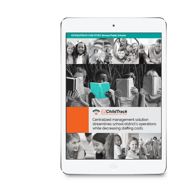
Federal funding is a major resource for afterschool programs in the United States. One of the most extensive programs, the 21st Century Community Learning Centers (CCLC) initiative, has been under fire in recent years by an administration intent on cutting educational funding programs.
While federal funding isn’t the only resource for afterschool grants, it has the broadest impact. Many communities rely on it, especially in financially disadvantaged areas. Both rural and urban youth populations need a safe place to be in the afterschool hours. Research shows these programs decrease crime in the area as well as improve student achievement.
Fortunately, Congress continues to approve funding, and there are other resources available if you consider grants other than those explicitly earmarked for out of school time. Federal funding comes in three types, including significant block and formula grants. Resources are available also for afterschool social and emotional learning (SEL) opportunities.
Non-federal options are somewhat scattered, and many specialize. Still, if you have a specific activity or opportunity in mind, you may qualify for one of the narrower grant categories.
Funding Types
Federal funding comes from three sources: entitlement programs, discretionary programs, and block or formula programs.
- Entitlement programs serve any group or individual that fits the program’s eligibility criteria. There is no competition for entitlement funding, and these sources can be administered directly by a federal agency or distributed to the states for administration. An example of an entitlement program is the National School Lunch Program.
- Discretionary programs are competitive grants provided for a targeted type of program. These funds can be administered by state agencies or directly through federal agencies. An example of a discretionary program is AmeriCorps, which provides grants to run afterschool programs and other activities.
- Block or formula grants provide a specific amount of federal funds to the states. The amount is based on an algorithm that takes into account parameters such as population, poverty rate, and other demographic data. Not every person or group that meets the eligibility criteria is guaranteed funds from a block or formula grant. An example of these programs is Title I funding received by the states for low-income school districts.
A majority of federal funding controlled by federal agencies falls under discretionary programs. Schools and other organizations can apply directly to a government agency like the federal Department of Education, Justice, and Health and Human Services for a grant to prevent violent behavior through afterschool programs, for instance.
Each afterschool organization is free to compete or apply for more than one discretionary grant by highlighting the specific opportunity that matches the grant’s focus.
Prominent Block and Formula Grants
The 21st Century Community Learning Centers initiative primarily serves Title I students in programs to advance academic achievement. 21st CCLC funds are distributed to each state by the federal government. Eligible applicants can be schools, public organizations, community-based organizations, or private organizations.
The grants are awarded for three to five years as direct support grants.
The Child Care Development Fund, the CCDF, is aimed at families with children under the age of 13. The state social services agency is in charge of the fund distribution, and it may be provided as direct support or subsidies. Again, schools and public, private, or community programs are eligible to apply.
Title I of the Elementary and Secondary Education Act of 1965 set aside funds to provide support services for disadvantaged students. The state education agency administers the funds, possibly through the State Department of Education. These funds are available for a variety of programs, one of which is afterschool programming. School districts and local educational agencies may apply.
The TANF program (Temporary Assistance to Needy Families) helps families with children, including job preparation and work. The intent is to reduce out-of-wedlock pregnancies and promotes a two-parent household.
Administered by the state social services agency, up to a third of TANF funding can be directed to CCDF, which can then be used for afterschool programs. Eligibility requirements vary by state, but TANF provides welcome flexibility to the states for funding educational efforts.
SEL Programs
SEL, the social and emotional learning grant-funding program, supports some afterschool services as well:
- NEA Foundation Student Achievement grants are for teachers, educational support professionals, and counselors to use for student improvement, focusing on critical thinking and problem-solving. Applications are reviewed three times a year. An afterschool program could meet the criteria for these grants.
- Project AWARE (Advancing Wellness and Resiliency in Education) provides state education agency grants. Project AWARE advances youth mental health awareness in schools and communities. The funds are used to improve access to services for school-age children and youth. Administered by state agencies, the funds can be used for staff training and to help families experiencing behavioral health issues find the appropriate agencies.
- IDEA is a federal program supporting students with disabilities ages three through 21. If you have such students in your afterschool program who have an individualized education plan (IEP), these funds can support SEL initiatives aimed at disabled students.
By determining specific needs within your student population, you can apply for federal funding from more than one discretionary grant fund. For example, Youthbuild supports job skill training, GEAR UP provides college readiness activities, and the Safe Schools/Healthy Students initiative supports programs to reduce violence.
Some of the more sizable federal funding sources, like 21st CCLC, distribute funds to the states, where it is thought the grants will be awarded more effectively. The grants are usually block grant and entitlement programs that may require the state to match funds. The benefit of these programs is that the state, rather than the federal government, has discretion over the grant.
Federal funding is a primary source of grants for afterschool and other programs, but educational organizations must apply for them. Besides the broad-based block grants from 21st CCLC, you should take a look at targeted programs you offer or would like to provide, such as art or STEM initiatives. A properly written grant application can help you find multiple sources of funding to keep your program running while improving the students’ lives.





